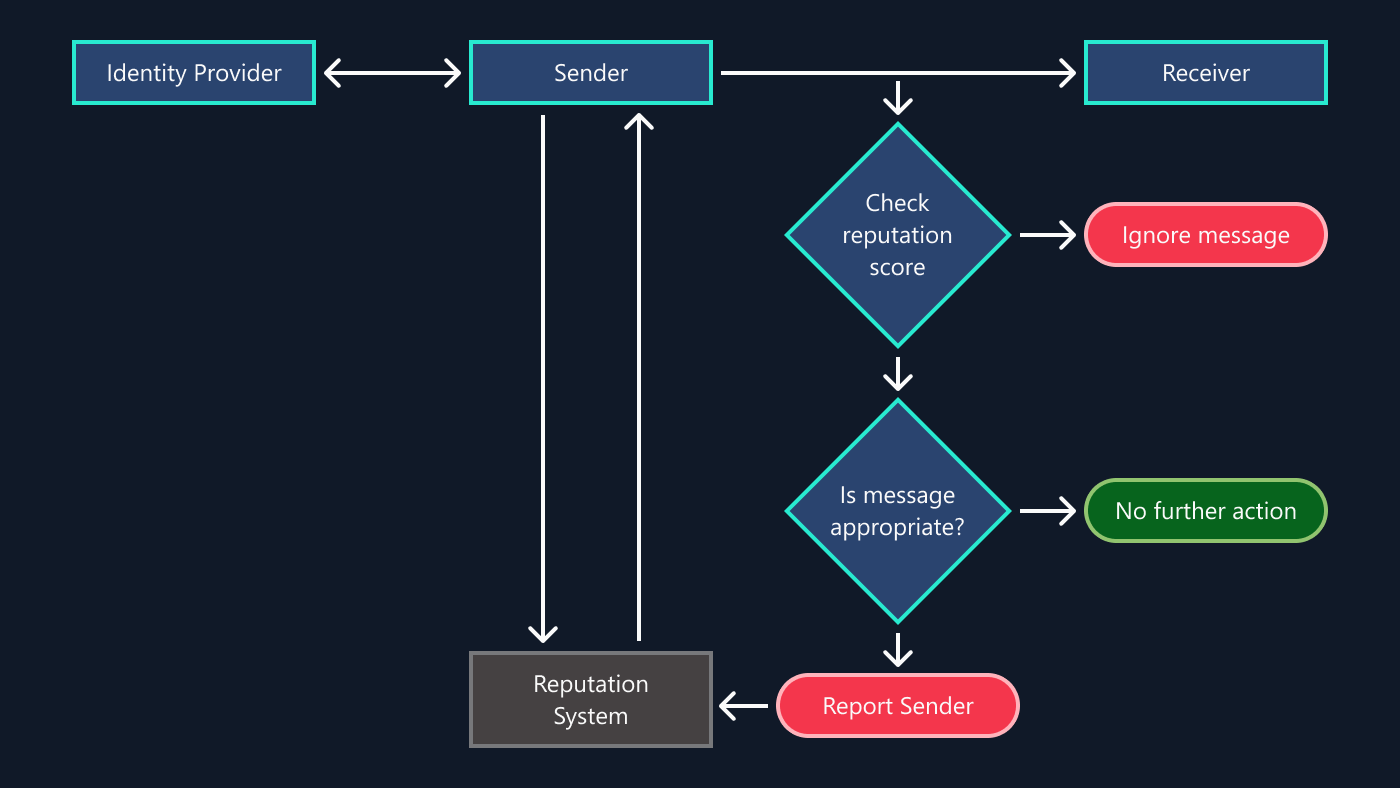By Rob Knies, Managing Editor, Microsoft Research
Eric Horvitz is sitting at his desk in his Redmond, Wash., office, discussing Microsoft Outlook Mobile Manager 2.0 (OMM), a just-released, downloadable add-in for Microsoft Outlook, when something on his computer monitor catches his eye. The new application has flagged as urgent an incoming e-mail from somebody wanting to join the discussion. Moments later, she calls in, gratefully. OMM has made its latest convert.
OMM brings the power of Microsoft Outlook to a user’s portable device. The technology can prioritize messages and make smart decisions about when to forward e-mail to a mobile device, based on the computed urgency of the e-mail and the user’s context. It also can send calendar reminders, task reminders, and an Outlook Today-style daily summary to all of a user’s wireless devices. OMM can also be harnessed to triage e-mail on your desktop.
Microsoft Research Blog
Microsoft Research Forum Episode 3: Globally inclusive and equitable AI, new use cases for AI, and more
In the latest episode of Microsoft Research Forum, researchers explored the importance of globally inclusive and equitable AI, shared updates on AutoGen and MatterGen, presented novel use cases for AI, including industrial applications and the potential of multimodal models to improve assistive technologies.
“People in a mobile setting feel disconnected from their e-mail and may grow concerned over time that they are missing something urgent,” says Horvitz, senior researcher and group manager for Microsoft Research’s Adaptive Systems and Interaction Group. “Many things are demanding their attention, so it can be valuable to limit alerts to urgent communications. Mobile Manager learns from user training how to act like an insightful, dedicated secretary 24×7.”
 OMM is a descendant of an e-mail triaging prototype developed at Microsoft Research, named Priorities, which has been used internally at Microsoft since the late 1990s. OMM v. 1.0 shipped in early 2001. OMM v. 2.0 introduces an array of new features and extensions. OMM reads each e-mail, identifies who sent it, considers numerous aspects of the content and structure of the message header and body, and determines if the user can wait until later to see it or would prefer having a time-critical message while away from a computer. Only the most urgent mail is sent to the user’s mobile device.
OMM is a descendant of an e-mail triaging prototype developed at Microsoft Research, named Priorities, which has been used internally at Microsoft since the late 1990s. OMM v. 1.0 shipped in early 2001. OMM v. 2.0 introduces an array of new features and extensions. OMM reads each e-mail, identifies who sent it, considers numerous aspects of the content and structure of the message header and body, and determines if the user can wait until later to see it or would prefer having a time-critical message while away from a computer. Only the most urgent mail is sent to the user’s mobile device.
“Many experiences come to mind. One memorable time, I was pulled away from the office unexpectedly to attend a funeral in New York,” Horvitz recalls. “It was a hot summer day in a distant place, and I remember feeling very disconnected as I later drove on a bumpy, potholed road—immersed in a different universe—when I received an urgent message reminding me to call a colleague at DARPA. I thought, ‘Wow, I’m in a whole other world, and what a nice feeling, that this gentle voice is reminding me of something important I need to do soon.’”
OMM learns about its user via user training. During a training phase, the user provides examples to the system of message urgency, and the add-in analyzes the content of the messages to understand the information contained within, then makes inferences about what the user considers urgent.
The system ships with a generic, universal urgency classifier as an out-of-the-box solution, designed to work satisfactorily for most people. But as the system receives user training, it learns more and more about the user’s preferences. After a few hundred messages, the system transforms in a graceful manner into a personalized, customized service.
“I get a real kick out the cross-device nature of the system as I move between desktop and mobile settings,” Horvitz says. “One has the sense that ‘here’s an intelligent presence that has insights about my context, and that cares about me no matter where I am.’”
OMM provides a rich representation of a worker’s lifestyle. It offers time-sensitive profiles that enable you to specify context-sensitive preferences about messaging during such settings as work, home, and vacation, and it will react according to the settings you have selected. It can be configured to deliver messages at a variety of priority levels, from all items to only those of highest urgency. And if you’re using a computer away from your office, it knows about the messages you’ve already seen and won’t send those to your mobile device.
One cool feature in the application is presence forecasting, an ability to estimate when a user might again be online when they leave a desktop computer. OMM examines usage patterns and makes a prediction on when a user will return to the computer. It uses this functionality to decide when to send messages to users.
And OMM can save users money, too. For those whose connectivity-plan cost is based on usage, the service can set message limits, break them into pieces, and limit the number of messages sent per day. Its alerting simulator feature can estimate how many messages would be sent to a device per day with a given set of settings, which can then be adjusted to a preferred level.
All in all, the service provided by OMM can be habit-forming.
“I was down at Stanford a number of years ago when our team was using the Priorities research prototype, OMM’s ancestor,” Horvitz recounts, “and I noticed I wasn’t getting any messages on my device. Could it be that nothing was urgent enough to be transmitted? Something must have been up. I called home. It turns out that there had been a windstorm in Redmond, and our server has lost power.
“That was the first time in my life that I felt like I had lost a utility–where the utility wasn’t electricity or water, but automated intelligence. I suffered a loss of a service that I had grown to depend on. It highlighted to me the likely prospect that, just as we’ve grown accustomed to electricity, we’ll someday grow accustomed to a variety of services that rely on automated learning and reasoning—some which stream valuable information right into devices in our pockets.”
OMM’s research ancestor, Priorities was developed as part of the Attentional User Interface effort, a thematic area of research taking human attention as the scarcest resource in computing. The early work on the Priorities project explored several key components of OMM, including the core effort on machine learning for triaging, presence forecasting, mobile messaging, and designs for the ambient display of urgent information.
“In the mid-’90s, we wondered if we could determine how urgent a message is by considering many aspects of messages and related information, including information about relationships among senders and recipients, Horvitz says. “We found that we could do that. We explored multiple aspects of this challenge and developed such measures as ‘the expected cost of delayed review’ of messages, capturing in a clear manner the urgency of a communication.”
OMM determines urgency by analyzing many categories of findings or features of messages, including the number of people receiving the message, how long a message is, whether questions are being asked within its body, what sort of verb tenses are employed, and whether it contains dates and times and how close they are to the present. The message sender’s identity and relationship to the recipient are analyzed by accessing the user’s address book and an organizational chart via Microsoft’s Active Directory Service to determine such relationships as whether the sender is a peer, a direct report, a manager, somebody else up or down the org chart, or external—defined as somebody who doesn’t appear in the personal address book or the organizational chart.
“Researchers have different sets of goals,” Horvitz says, “including the pursuit of different mixes of theoretical results and applications that demonstrate the power of new theory or methods. I enjoy exploring theoretical issues, but I also get excited about seeing applications sing in the world, delivering value to people—even in early prototypes that point the way to the future. Mobile Manager’s automated reasoning can provide value in the daily life of people.”
The application works with recent versions of Microsoft Windows and Microsoft Outlook and is available to anybody with a device that can receive SMS messages. It is optimized for those using Windows XP and Outlook 11, and it works directly with Outlook, not requiring a back-end server.
Such a development effort is hardly the product of a single individual. Horvitz is quick to single out those who helped bring OMM to fruition. “It was a team effort,” he says. “Muru Subramani was the key software engineer on OMM v. 2.0. Johnson Apacible was the development-team manager. The final polish was applied by Gavin Jancke’s team; in particular, Piali Choudhury. And early on, for Mobile Manager v. 1.0, Greg Baribault, Sharad Mathur, and others from the product teams did a great deal of work.
“We’re building software that is starting to learn about and understand human concerns in a deeper way,” Horvitz adds. “As researchers, that really turns us on. It’s an example of computers understanding people and their goals.”
Not only has the computer’s understanding increased, but so has its empathy toward its user.
“Mobile Manager recognizes that people may be quite stressed,” Horvitz says. “Their Inbox is exploding, and it’s hard to triage. But here, the same computer that is perhaps the biggest source of your information overload is also helping to decrease it.
“It’s almost like it’s saying, ‘Wait, don’t give up yet!’”





